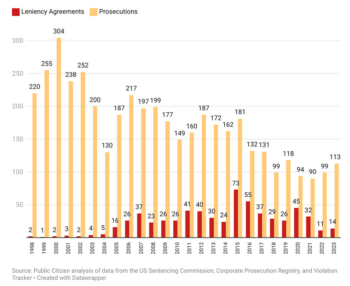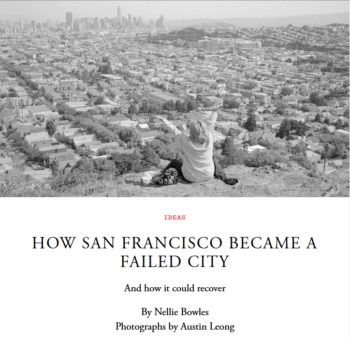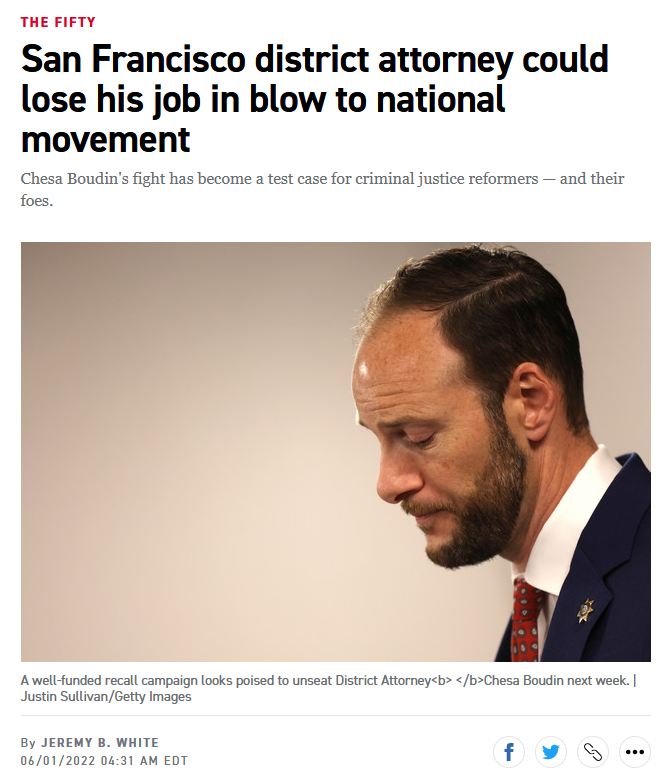Janine Jackson interviewed the Center for Constitutional Rights’ Shayana Kadidal about the Guantánamo plea deal for the August 9, 2024, episode of CounterSpin. This is a lightly edited transcript.

AP (via PBS, 8/2/24)
Janine Jackson: Years of negotiations led to the recently announced pretrial agreements for Khalid Sheikh Mohammed and two other defendants accused of directing the September 11, 2001, attacks on the World Trade Center and the Pentagon, that would’ve meant their pleading guilty to charges, including murder and conspiracy, and receiving lifelong prison sentences.
As AP put it:
The torture that the defendants underwent while in CIA custody has slowed the cases and left the prospect of full trials and verdicts still uncertain, in part because of the inadmissibility of evidence linked to the torture.
But at the 11th hour, Defense Secretary Lloyd Austin stepped in to override the agreements, claiming to do so in the name of victim’s families, the US military and the American public, who, he says, “deserve the opportunity” to see a military commission trial play out.
Here to help us understand what happened and what happens now is Shayana Kadidal, senior managing attorney at the Center for Constitutional Rights. Welcome to CounterSpin, Shayana Kadidal.
Shayana Kadidal: Thanks for having me.
JJ: Media attention to Guantánamo Bay, and what happens to those held there, has been spotty and, in recent years, largely absent. So listeners may have forgotten that men were held there for years without charge, much less conviction. Some have been approved for transfer, meaning they’ve been determined not to be a threat, yet have remained there. And, of course, it’s undisputed that many have been tortured and abused at this extralegal military prison.
So these plea agreements came with all of that context, all of that history, and they weren’t seen as a victory for anyone; those aren’t the terms to think in. But they were seen as a meaningful and overdue step, yes?

Shayana Kadidal: “They’ve taken the most significant criminal trial of the century, the 9/11 case, and put it into a system where everything is being invented from scratch.” (image: TRT World, 3/3/17)
SK: Yeah, I think any plea bargain is a compromise, right? I’ve seen these described as kind of the least-worst solution, given the history of these cases. And, basically, they’ve been presented as trading off the death penalty in exchange for a guilty plea.
But I think the thing listeners need to really know is that prosecutors, the military prosecutors, really badly wanted this deal done, because they think, like everyone else who is observing these cases, they recognize that the death penalty was never, as a practical matter, going to happen in these cases, for a bunch of different reasons, right?
First of all, the military commission system is incredibly slow. They’ve taken the most significant criminal trial of the century, the 9/11 case, and put it into a system where everything is being invented from scratch. So things that have been well-established for two centuries in the federal criminal system have to be reasoned out from the beginning in the military commissions.
And then, on top of that, there are these issues around the use of torture evidence that have really slowed things down. That’s not to say that torture evidence is the main problem standing in the way of a conviction. There is plenty of evidence against these particular defendants that isn’t contaminated by torture, including interviews they did with media before they were ever captured.
But the bottom line is that this process is going along really slowly. The defendants are in their mid-50s, the two older ones, already.
And then there are a bunch of other questions. Even if they got a guilty verdict, then there would be a sentencing phase, where a military jury gets to decide between death and probably life imprisonment. And we know that the CIA is very reluctant to produce its own officials as witnesses in that kind of phase or proceedings. They basically refused to do it in another case that we had involving a plea bargain. So that may end up being something that stands in the way of a death penalty verdict.
Then, on top of that, there’s a way that military juries will do what some civilian juries have done, and react to the torture at Guantánamo with clemency, that they’ll want to punish the government by issuing a life sentence instead of death.
So, bottom line, the prosecutors really wanted this deal badly.
JJ: That might surprise some folks, I think, on the face of it. And then, on the other hand, some people might imagine that any kind of plea deal would be opposed by the families and friends of those killed, the nearly 3,000 people killed on September 11, but that wasn’t really the case, was it?

Fox News (8/2/24)
SK: Yeah, it’s a very mixed bag, I must say. The family members—there are a small group of family members who are very heavily engaged in the details of these cases, including the politics of it, and they fall all over the spectrum, just like regular Americans. We’ve got 9/11 families who have been out there saying that they were strongly in favor of this deal, because it offered some semblance of finality, and because part of the deal, apparently, was the ability to pose questions, I believe, in writing to the defendants, and have them answered within 45 days. And those questions would go to, not just things like their motivations for carrying out the attacks, but also some detailed things that we don’t have a lot of information about, even from their interrogation, things like the financing of the attacks, right? So the families wanted answers to these questions, and this is really the only way they were going to be able to get it.
On the other side, you’ve got folks who have been on Fox News a lot, talking about how the commissions are much tougher than the civilian criminal system—which, really, I think at this point in history, we can say is definitively not true—but have been very actively organized in favor of keeping these cases in the military system, right?
I suppose it’s probably worth noting that if these cases had been brought to the civilian system, they probably would’ve been over a long, long time ago. Eric Holder had made the decision in 2009 to bring these cases to New York and try them in front of a civilian jury. If that had been the case, as he said last week, these guys would’ve been a memory. The cases would’ve gone to trial in a year or two, the appeals would’ve been over in a year or two, and they probably would’ve received pretty severe sentences, maybe even death, and the cases would have been over. As Holder said, it was “political hacks” who stopped the cases from being brought to New York, where they would’ve been disposed of much more quickly than in the commissions.

PBS (11/10/15)
But, again, that’s political water under the bridge. Congress has banned bringing men to the United States for trial from Guantánamo. So, again, this is kind of the least-worst solution, plea bargain in the military trial system.
JJ: When people hear that Defense Secretary Austin revoked the pretrial agreements because there ought to be trials, I think a lot of people might be misled about what is meant by a “trial” in this situation, a military commission trial. What should we know about that?
SK: The first thing is that it’s going to take years to get there. These charges originally were brought in February 2008, and so it’s been, what is that, 15, 16 years of pretrial motions, and they’re nowhere close to being done with that. Then once you get to a trial, there are going to be all sorts of issues about, again, the CIA producing witnesses, to what they did to these men, not just in the merit phase, but also in the sentencing phase.
And then, also, where it took place. We have a lot of sensitive diplomatic concerns around where the secret prisons the CIA held these men in were located, right? So that may stand in the way of actually conducting a trial.
And after that, we’ve got appeals, into a military appeal system, and then from there into the appellate courts and the federal system, and then to the Supreme Court.
So, again, the oldest of these defendants is 56 years old. They are de facto already serving life sentences, if you think that these cases are never going to come to a resolution after a trial and appeals. And so, again, it made perfect sense for the prosecutors to pursue this.

New York Times (8/4/24)
The real question is, what was Lloyd Austin thinking? He had to have been aware that these negotiations were underway and were pretty close to being resolved. The New York Times even reported over the weekend that DoD officials knew about the progress of the negotiations. So why the reversal? I think there’s no explanation other than politics and the election.
JJ: That’s what I was going to ask, because Austin says he’s long believed that military trials were the only way forward. So that rings a little weird, given the timing.
SK: When you see people like Tom Cotton coming out and saying that this is Biden being soft on the terrorists with the plea bargain deal, you can understand why it might’ve been everybody’s preferred timing on the political end for this to happen after November.
But what comes next looks like it’s going to be legal challenges. There are very narrow circumstances where an assigned pretrial agreement like this, a plea bargain agreement, can be withdrawn. So I think the defendants are first probably going to challenge whether or not what Austin tried to do in voiding the agreements was even effective, whether he has power to void them.
And on top of that, military prosecutors are supposed to be relatively independent of the people above them in the chain of command. In the federal civilian criminal system, everybody knows that President Trump can relieve the attorney general if he doesn’t like some prosecution that he’s undertaking. But there are some norms about how the AG is supposed to be relatively independent in making judgment calls, right?
Well, on the military system, those aren’t norms; they’re actually written into the two major statutes, the Military Commissions Act and the Uniform Code of Military Justice. So when you have civilian officials like Lloyd Austin, political appointee, trying to pull the strings on a prosecutor’s judgment, it’s a serious problem, and dismissal of the case is the usual remedy for that. So, again, something that could add years and years more delay to a system that wasn’t exactly moving along quickly.
JJ: All right, then; we’ll end on that note.
We’ve been speaking with Shayana Kadidal, senior managing attorney at the Center for Constitutional Rights. You can track their work on Guantánamo cases and others at CCRJustice.org. Shayana Kadidal, thank you so much for joining us this week on CounterSpin.
SK: Thanks for having me.
This post was originally published on FAIR.

 In a piece factchecking Donald Trump’s claims in his acceptance speech at the 2024 Republican convention, the New York Times‘
In a piece factchecking Donald Trump’s claims in his acceptance speech at the 2024 Republican convention, the New York Times‘ 















































































 San Francisco voted on June 7 to recall its district attorney, Chesa Boudin, a reformer who had challenged the traditional “lock ’em up” policies of big-city prosecutors. The margin was initially reported as a lopsided 61%–39% landslide, in what major news media across the country reported as a blow to progressive Democrats.
San Francisco voted on June 7 to recall its district attorney, Chesa Boudin, a reformer who had challenged the traditional “lock ’em up” policies of big-city prosecutors. The margin was initially reported as a lopsided 61%–39% landslide, in what major news media across the country reported as a blow to progressive Democrats.


























